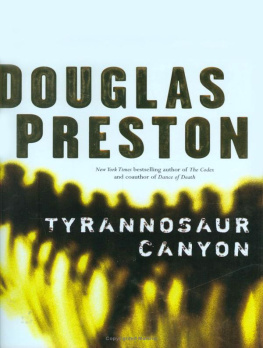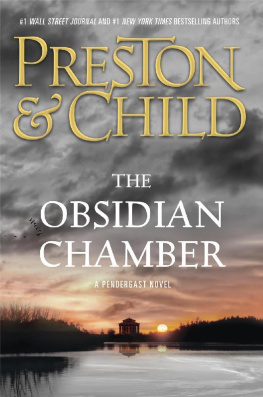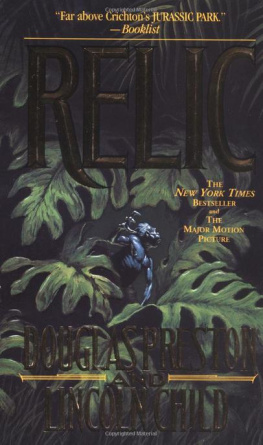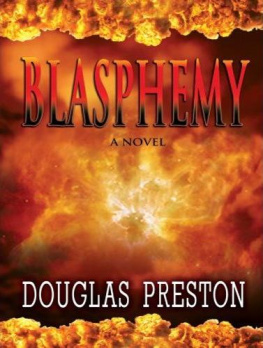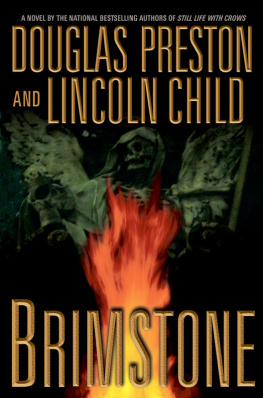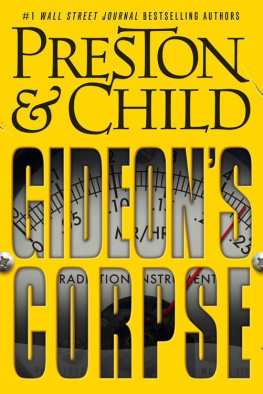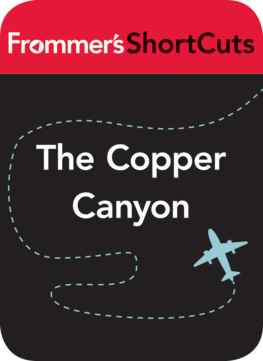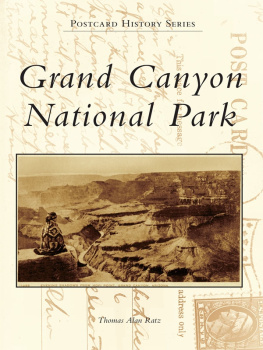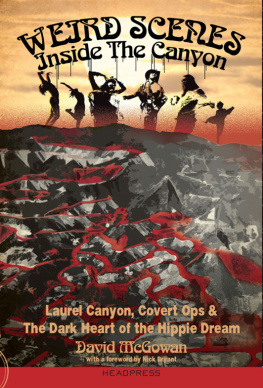DOUGLAS PRESTON
TYRANNOSAUR CANYON
For my son,
Isaac
PROLOGUE
December 1972 Taurus-Littrow Valley Mare
Serenitatis The Moon
ON DECEMBER 11,1972 , the last manned Apollo mission to the moon touched
down at the Taurus-Littrow landing site, a spectacular, mountain-ringed valley at the edge of the Sea of Serenity . The area promised to be a geological wonderland of hills, mountains, craters, debris fields, and landslides. Of particular interest were several curious impact craters that had punched deep holes in the valley floor, spraying breccia and glass across the valley. The mission had high hopes of returning with a treasure trove of lunar samples.
Eugene Cernan was the commander of the Lunar Module and Harrison "Jack" Schmitt its pilot. Both men were ideally suited for the Apollo 17 mission. Cernan was a seasoned veteran of two prior missions, Gemini IX and Apollo 10; while Schmitt was a brilliant geologist with a Ph.D. from Harvard who had been involved in planning earlier Apollo missions. For three days Cernan and Schmitt explored Taurus-Littrow with the help of the Lunar Rover. On their first venture across the lunar landscape, it became obvious to all that they had hit the jackpot, geologically speaking. One of the most exciting discoveries of the mission, and one that led indirectly to the mysterious find at Van Serg Crater, occurred on the second day at a small, deep crater known as Shorty. As Schmitt got out of the Rover to explore the rim of Shorty, he was astonished to see that his boots were kicking through the gray lunar dust to expose a layer of bright orange soil underneath. Cernan was so startled that he lifted his orange reflective visor to make sure it wasn't an optical illusion. Schmitt dug a quick trench and discovered that the orange soil graded down to a brilliant red.
The "Backroom" at Houston excitedly debated the source and meaning of this strangely colored soil, and they asked the two men to take a double-core sample to bring back to Earth. After Schmitt took the core, the two men hiked to the rim of Shorty crater, where they saw that the impactor had blasted through the same orange layer, which lay exposed along the sides of the crater.
Houston wanted to get samples of the orange soil from a second location. For that reason, they placed on the exploring itinerary a small unnamed crater close to Shorty, to be explored on Day 3, which they hoped would have an exposure of the same orange layer. Schmitt christened it Van Serg Crater, after a geology professor he had known at Harvard who wrote humorous pieces under the pen-name of "Professor Van Serg."
Day 3 turned out to be long and grueling. Dust fouled their equipment and hampered their work. That morning, Cernan and Schmitt had driven the Lunar Rover to the base of the mountains ringing Taurus-Littrow to examine a gigantic split boulder named Tracy 's Rock, which had evidently rolled out of the mountains eons ago, leaving a trail in the soil. From there the two men explored an area called the Sculptured Hills, finding little of interest. With great difficulty Cernan and Schmitt hiked partway up one of the hills to inspect an odd-looking boulder, only to discover it was a scientific dud, nothing more than a "shocked piece of old lunar crust," which had been thrown onto the hillside by an ancient impact. The two astronauts descended the steep, powdery hillside leaping like kangaroos, Schmitt making noises as he jumped from side to side, pretending he was skiing moguls, joking, "Can't keep my edges. Shhhoomp. Shhhoomp. Little hard to get good hip rotation."* Cernan took a spectacular, low-gravity tumble, landing unhurt in the deep, powdery soil.
By the time they reached Van Serg Crater, both men were exhausted. As Cernan and Schmitt approached, they had to drive the Lunar Rover through a field of football-sized rocks blasted out of the crater. Schmitt, the geologist, thought the rocks looked odd.
"I'm not sure what's happened here, yet," he said. Everything was coated in a thick layer of dust. There was no sign of the orange layer they were after.
They parked the Rover and picked their way through the debris field to stand on the rim, Schmitt arriving first. He described it for Houston : "This is at least a large, blocky rim crater. But even it has the mantle dust material covering the
(*A11 conversations quoted above are from the original transcripts of the Apollo 17 mission, edited by Apollo Lunar Surface Journal tftimi Eric M.Jones. Copyright 1995 by Eric M. Jones.)
rim, partially burying the rocks. And it's down on the floor, as near as I can tell, and on the walls. The crater itself has a central mound of blocks that's probably fifty meters in diameter-that's a little high-thirty meters in diameter."
Cernan arrived. "Holy Smoley!" he said as he gazed into the visually striking crater.
Schmitt went on. "The rocks are intensely shattered in that area, as are the ones that are on the walls." But as he looked around for orange soil, he saw none, just a lot of gray lunar rock, much of it in shatter-cones caused by the force of the impact. It appeared to be an ordinary crater, no more than sixty or seventy million years old. Mission control was disappointed. Nevertheless, Schmitt and Cernan began collecting samples and putting them in numbered specimen bags.
"These are very intensely fractured rocks," Schmitt said, handling a specimen. "And it comes off in small flakes. Let's get this one, because this will be the best oriented one for documentation. Plus, why don't you get that one you've got inside there?"
Cernan took a sample and Schmitt picked up another rock in his scoop. "Got a bag?"
"Bag 568."
"That's a corner, I think, off the block that Gene documented here."
Schmitt held out another empty bag. "We'll get another sample that'll be from inside the block."
"I can get it with the tongs real easy," Cernan replied.
Schmitt cast his eye about and saw another sample that he wanted-a curious-looking rock about ten inches long, shaped like a tablet. "We ought to take that just as is," he told Cernan, even though it was almost too big for a single sample bag. They picked it up with the tongs.
"Let me hold this end," said Cernan as they tried to maneuver the specimen into the bag. "Let me hold it, and you put the bag on." Then he paused, looking closely. "Well, see that? See the white fragments in there?" He pointed to a number of white fragments embedded within the rock.
"Yeah," said Schmitt, examining the spots closely. "You know, it might be that these might be pieces of the projectile. I don't know. 'Cause it doesn't look like... It's not subfloor. Okay. Pin it down."
When the rock was safely bagged, Schmitt asked, "What's the number?"
"It's 480," responded Cernan, reading out the number printed on the side.
Meanwhile, Houston had became impatient with the time being wasted at Van Serg, now that they had determined there wasn't any orange soil there. They asked Cernan to quit the crater and take some 500mm photographs of North
Massif, while Schmitt did a "radial survey" of the ejecta blanket surrounding Van Serg. By this time, Schmitt and Cernan had been out exploring for nearly five hours. Schmitt worked slowly, and during the survey his scoop broke-dust problems again. Houston told him to forget the rest of the radial survey and prepare to close out the site. Back at the Rover, they took one last gravimetric meeting and a final soil sample, did the closeout, and returned to the Lunar Module. The next day, Cernan and Schmitt lifted out of the Taurus-Littrow Valley, becoming the last human beings (at least for now) to walk on the moon. Apollo 17 returned to Earth with a splashdown on December 19, 1972 .
Lunar Sample 480 joined 842 pounds of other lunar rocks from the Apollo missions at the Lunar Receiving Laboratory at the Johnson Space Center in Houston , Texas . Eight months later, with the end of the Apollo program, the Lunar Receiving Laboratory was closed and its contents were transferred to a newly built, super-high-tech facility at the Johnson Space Center , called the Sample Storage and Processing Laboratory or SSPL for short.
Next page
